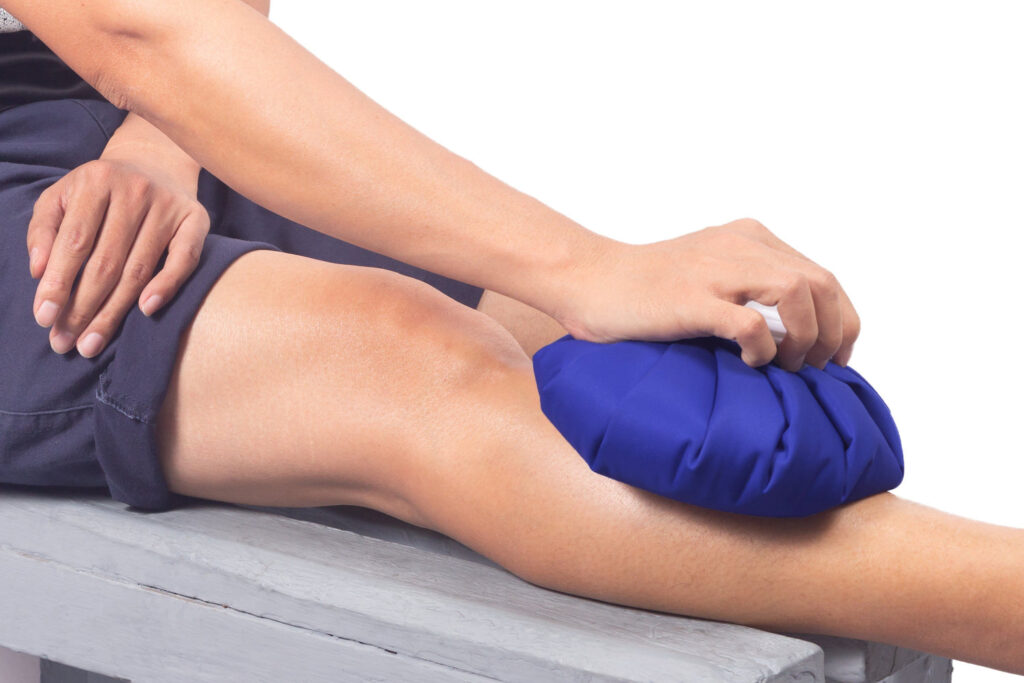Tendonitis, a common orthopedic ailment that affects millions of people worldwide, can be an excruciating experience. Whether you’re an athlete pushing your physical limits or someone who simply enjoys an active lifestyle, the pain and discomfort associated with knee tendonitis can be a significant hindrance. When it comes to managing this condition, one often-recommended treatment is the application of ice to the affected area. But how long should you ice your knee for tendonitis to maximize its therapeutic benefits? This is a question that has perplexed both medical professionals and patients alike.

In the pursuit of a definitive answer, we turn to science. The quest for evidence-based guidelines regarding the optimal duration for icing your knee in cases of tendonitis is a vital one. In this article, we delve into the world of medical research and clinical studies to bring you the latest insights on the subject.
Check out our Knee Pads for Comfort and Relief
While it’s essential to consider personal preferences and the advice of healthcare professionals, understanding the scientific principles behind the recommended icing duration can empower you to make informed decisions about your tendonitis management. So, join us on this journey as we explore the best practices for icing your knee in tendonitis, grounded in the principles of evidence-based medicine. Discover the most effective and safe approaches to alleviating pain, reducing inflammation, and promoting the healing of your injured tendon, all supported by the latest research findings.
The ideal duration for icing your knee in cases of tendonitis can vary depending on individual factors, such as the severity of the condition and your personal comfort. However, a general guideline based on scientific knowledge and medical recommendations is typically around 15 to 20 minutes.
Here’s a breakdown of what this recommended icing duration entails:
- 15 to 20 Minutes: Applying an ice pack to the affected knee for this duration is usually sufficient to provide therapeutic benefits without risking damage to your skin or underlying tissues. Longer icing periods can potentially lead to cold-related injuries, so it’s essential to stay within this timeframe.
- Frequency: You can repeat the icing process multiple times throughout the day, with at least an hour of rest between each session. This helps maintain the benefits of reduced inflammation and pain relief without overexposing your skin and tissues to the cold.
- Use a Barrier: To protect your skin from direct contact with the ice, it’s advisable to wrap the ice pack in a thin cloth or towel. This ensures a safe and controlled cooling effect.
- Monitor Your Comfort: It’s essential to listen to your body. If the cold becomes uncomfortable or painful during the 15-20 minute application, remove the ice pack immediately. Prolonged exposure to extreme cold can lead to frostbite or skin damage.
- Consult a Healthcare Professional: Remember that individual cases of tendonitis may vary, and consulting with a healthcare professional is always a wise decision. They can offer personalized advice and may recommend specific treatment durations based on your unique situation.
In conclusion, while the 15 to 20-minute guideline provides a useful starting point for icing your knee in cases of tendonitis, it’s crucial to customize your approach based on your comfort level and the advice of a healthcare expert. The ultimate goal is to harness the therapeutic benefits of cold therapy, such as reduced inflammation and pain relief, while ensuring your safety and well-being during the healing process.
The optimal duration for icing your knee in cases of tendonitis, according to scientific research and medical recommendations, typically falls within the range of 15 to 20 minutes. This guideline is based on the principles of cryotherapy, which is the application of cold therapy to manage pain and inflammation. Here’s why this duration is considered the best according to scientific evidence:
- Inflammation Reduction: Studies have shown that a 15 to 20-minute application of cold therapy can effectively reduce inflammation in the affected area. This is a crucial aspect of managing tendonitis, as excessive inflammation can lead to pain and delayed healing.
- Pain Relief: The cooling effect of ice helps numb the area and provides pain relief. This effect is most pronounced during the first 15-20 minutes of application.
- Minimized Risk: Longer exposure to cold can increase the risk of cold-related injuries, such as frostbite or skin damage. By adhering to the 15-20 minute timeframe, you can benefit from cryotherapy while minimizing these risks.
- Safe Tissue Preservation: Scientific research indicates that tissues, including skin and muscles, can safely tolerate 15-20 minutes of cold therapy without adverse effects.
- Improved Blood Flow: After the ice is removed, the body responds by increasing blood flow to the treated area. This “rewarming” effect can further aid in the healing process.
- Consistency and Comfort: This duration strikes a balance between achieving therapeutic benefits and ensuring the comfort of the person receiving the treatment. Longer icing sessions can be uncomfortable and less tolerable.
It’s important to note that while this guideline is based on scientific research, individual responses to cold therapy can vary. Therefore, it’s advisable to consult with a healthcare professional for personalized advice, especially if you have specific medical conditions or concerns.
In conclusion, for the best duration to ice your knee for tendonitis, following the 15 to 20-minute timeframe aligns with the scientific understanding of effective cryotherapy. This approach provides a safe and balanced method for reducing inflammation, relieving pain, and promoting the healing process, while considering individual comfort and tolerance.





